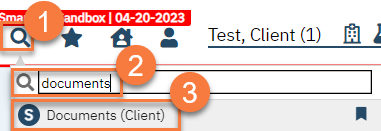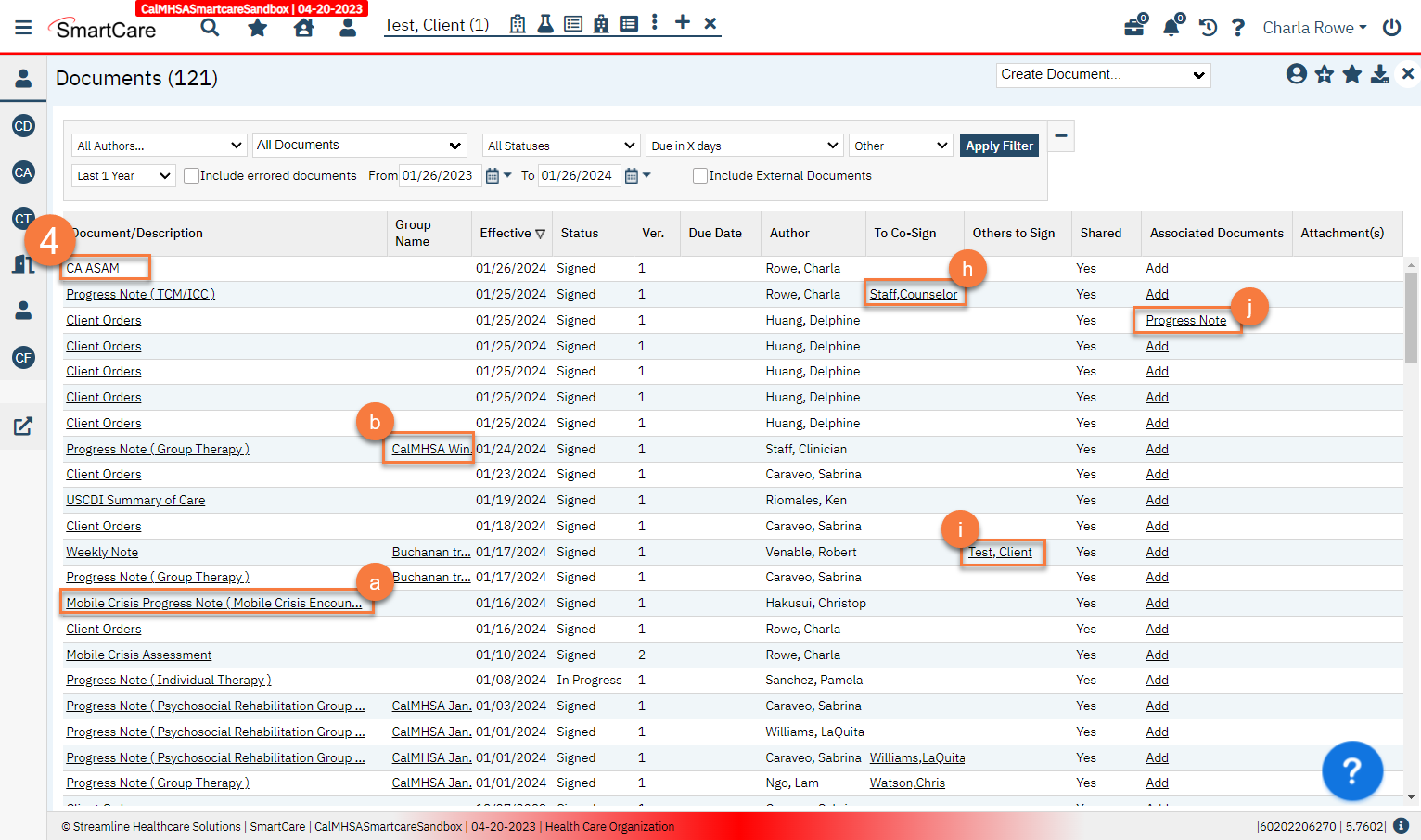- With the client open, click on the Search icon.
- Type in “Documents” in the search bar.
- Select “Documents (Client)” in the search results.

- This will take you to the Documents list page. Here, you can see all the documents that are part of the client’s medical record. You can use the filters to narrow the results to better find a specific document that you’re looking for. Click on the link in the Document/Description column to bring up the PDF of that document.
- If the document is a service note, the procedure code will be included in the description in parentheses.
- If the document is a group service note, the group name will show in the Group Name column. Clicking on the link in this column will take you to the Group Service Detail screen for that group service.
- The Effective column indicates the effective date of the document. By default, the effective date of a document will be today’s date when first creating a new document. This date can be manually changed to an earlier date, if necessary (e.g. when you are doing data entry on a document that was completed yesterday on paper).
- The Status column shows the status of the document.
- Signed indicates that the document has been signed by the author.
- In Progress indicates that the document has not yet been signed by the author.
- The Ver. column indicates how many versions of the document exist.
- The Due Date column indicates when a document is scheduled to be due, if applicable.
- The Author column indicates who the author of the document is. There can only ever be a single author for a document.
- The To Co-Sign column indicates any other SmartCare users who still need to sign the document. If a person is listed in this column, it means they are listed on the document as a co-signer, but have not yet signed the document.
- The Others to Sign column indicates non-staff members who may need to sign. This generally includes the client and/or the client’s guardian. If a person is listed in this column, it means they are listed on the document as a co-signer, but have not yet signed the document.
- The Associated Documents column shows any documents that have been associated to this document. In SmartCare, you can associate two or more documents together. This can be very helpful. One example would be associating a scanned version of a consent document, where the client signed on paper, with the SmartCare version of the same document, where the client’s signature is marked as “signed on paper”. This allows auditors to easily find relevant documents. Another example is associating a diagnosis document to a clinical assessment document. Or associating a service note that documents an LPHA consultation to the ASAM Assessment that a Non-LPHA completed.

